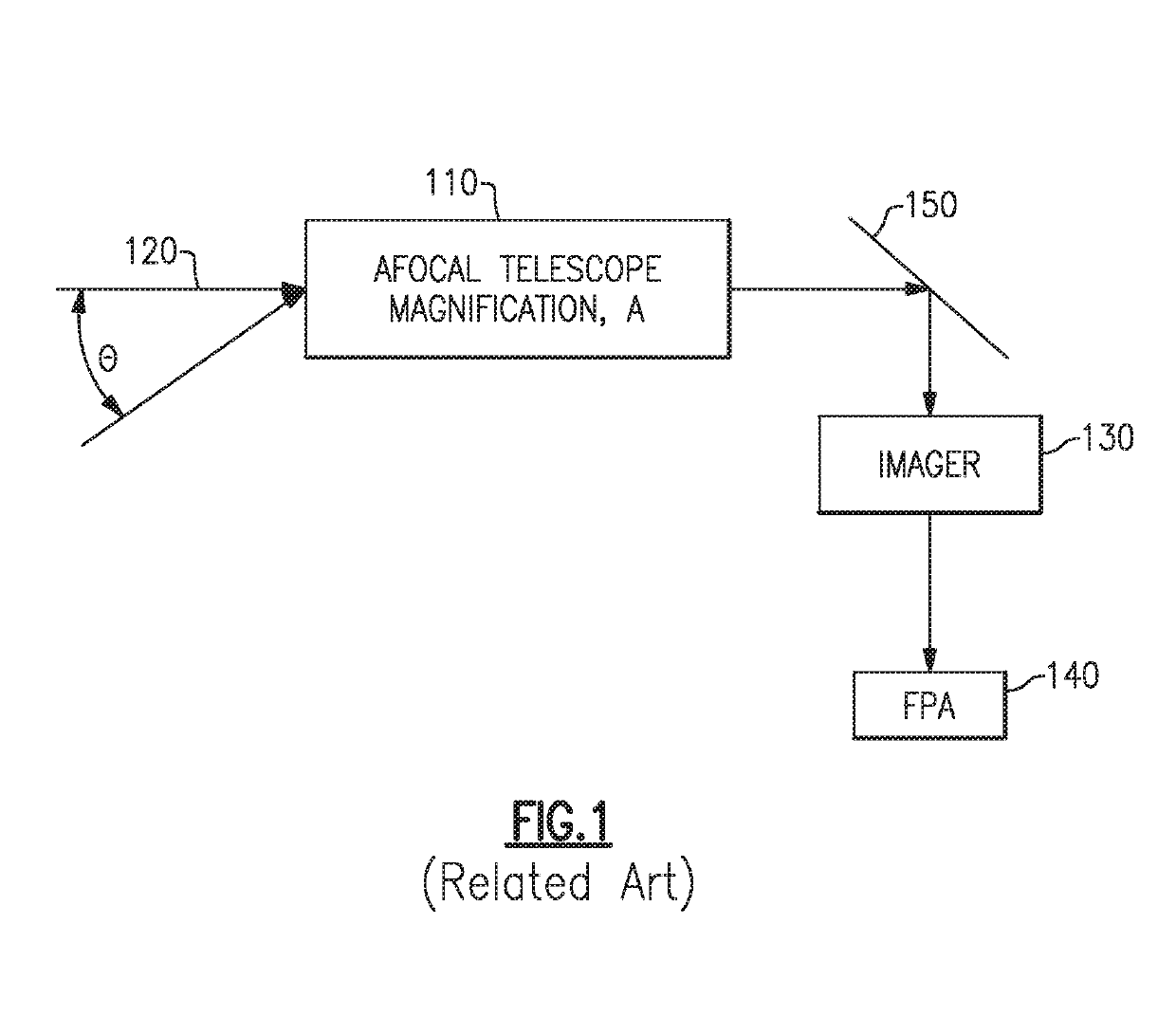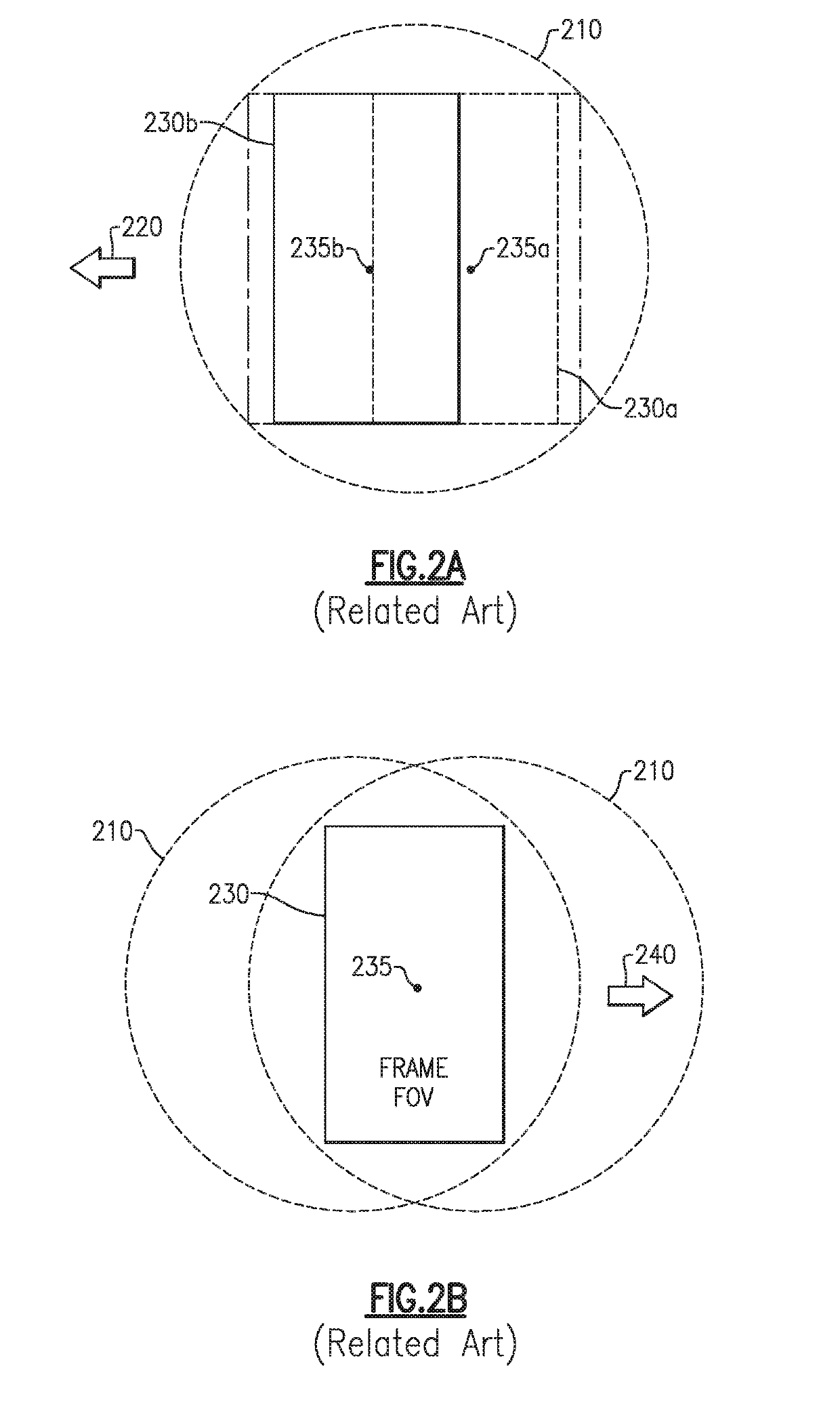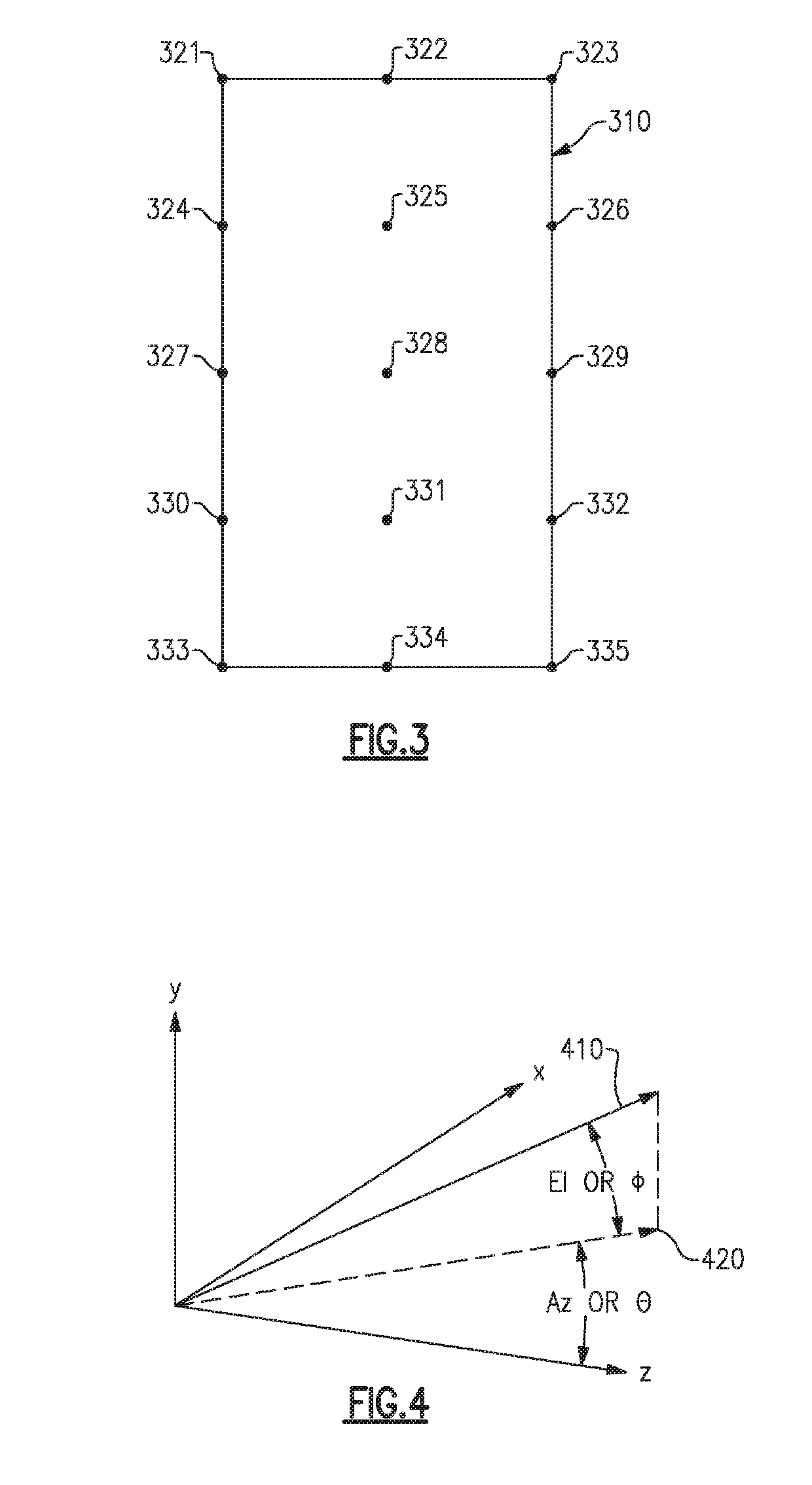Reflective optical configurations with prescribed optical field mappings for back-scanned imagers
- Summary
- Abstract
- Description
- Claims
- Application Information
AI Technical Summary
Benefits of technology
Problems solved by technology
Method used
Image
Examples
Embodiment Construction
[0028]As discussed above, back-scanned imagers or line-scanned imagers with large fields of view can be used to achieve scanning of the sensor field of view over a large field of regard at a high rate and with diffraction limited performance. However, standard optical design forms introduce image blurring for off-axis field points during the exposure / integration time, which lowers the signal to noise ratio of the target signal.
[0029]To further demonstrate the issue of image wander, the following examples consider the case of an infrared search sensor. FIG. 3 schematically illustrates an example of a nominal sensor frame field-of-view (FOV) 310 of an exemplary sensor in object space, showing the locations of a plurality of field points 321-335. The field points include top left 321, top 322, top right 323, left top middle 324, top middle 325, right top middle 326, left 327, on-axis (center) 328, right 329, left bottom middle 330, bottom middle 331, right bottom middle 332, bottom lef...
PUM
 Login to View More
Login to View More Abstract
Description
Claims
Application Information
 Login to View More
Login to View More - R&D
- Intellectual Property
- Life Sciences
- Materials
- Tech Scout
- Unparalleled Data Quality
- Higher Quality Content
- 60% Fewer Hallucinations
Browse by: Latest US Patents, China's latest patents, Technical Efficacy Thesaurus, Application Domain, Technology Topic, Popular Technical Reports.
© 2025 PatSnap. All rights reserved.Legal|Privacy policy|Modern Slavery Act Transparency Statement|Sitemap|About US| Contact US: help@patsnap.com



